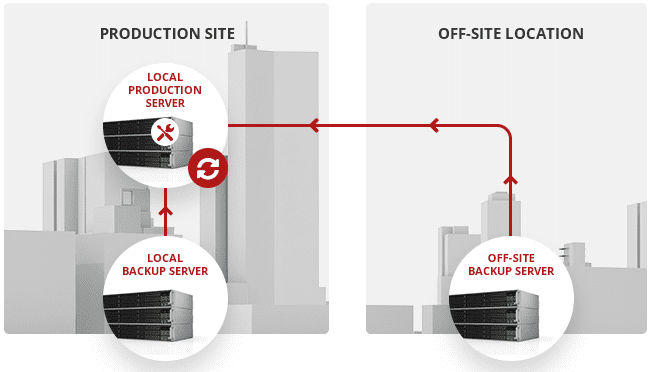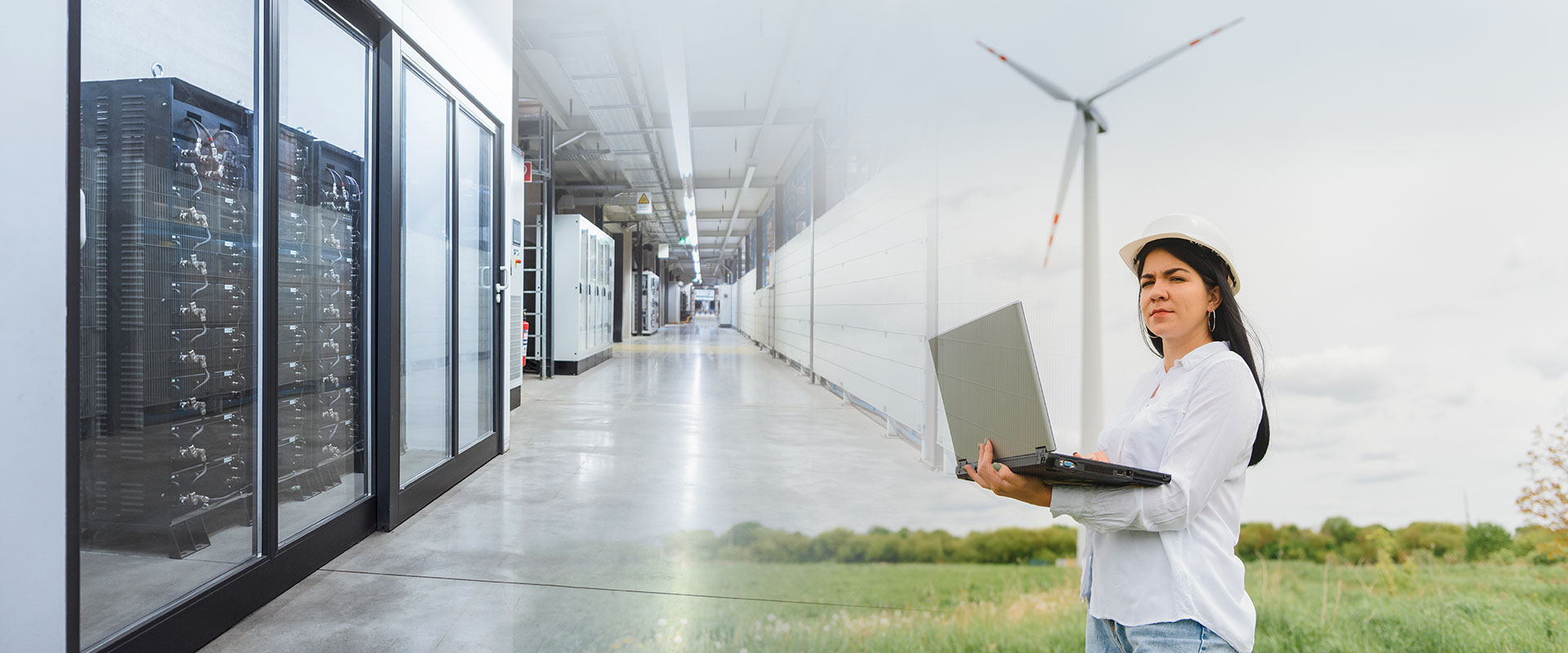The climate crisis is increasingly affecting many aspects of our lives, including the way we work and do business. Companies are becoming extremely dependent on weather conditions and how technological developments intersect with environmental challenges. The data storage industry is no exception. Floods, fires, and other extreme weather events disrupt equipment production and distribution. The costs caused by this often force organizations to make difficult compromises, not always in areas where they would like to. That’s why it’s important to analyze the key factors causing these disruptions and explore how green computing technologies in data storage can help mitigate their impact and contribute to a more sustainable
Green Computing Challenges in the Data Storage Market
High Water Consumption
Water plays a critical role in cooling data centers, which are central to green computing initiatives. AI-powered technologies, including popular chatbots like ChatGPT, consume significant amounts of water during cooling processes. Cooling systems such as towers rely on water evaporation, while air-cooling systems also require water during high-temperature periods, particularly in summer when water resources are scarce.
This excessive water usage depletes local resources and can lead to social conflicts over access to water. As public awareness grows, large tech companies face increasing scrutiny over their sustainability practices. For instance, Microsoft’s global water consumption rose by over 34% in 2022, while Google’s increased by 20% in the same year.
High Electricity Consumption
The energy required for servers and cooling systems in data centers is immense. With the rise of generative AI, the demand for computing power has surged. A single ChatGPT query uses ten times more energy than a typical Google search.
This high electricity consumption strains power grids, increases greenhouse gas emissions, and delays the transition from coal-fired power plants to cleaner energy sources. Data centers could account for up to 12% of total U.S. energy consumption by 2028. Training large AI models already produces CO₂ emissions equivalent to five gasoline-powered cars over their lifecycle.
Electronic Waste
Frequent upgrades and replacements of data storage hardware generate significant electronic waste. Current hardware lifecycles are short compared to the sustainable goals of up to 10 years. Addressing e-waste is a key component of green computing strategies.
Green Computing: Environmental Wealth & Technical Development
The concept of green computing, also known as green IT, emerged in the 1990s as a response to environmental concerns about energy consumption and electronic waste. The U.S. Environmental Protection Agency’s Energy Star program (1992) marked one of the first efforts to promote energy-efficient products and reduce greenhouse gas emissions.
Green computing focuses on optimizing energy use in data centers, reducing e-waste, and minimizing carbon footprints. It promotes energy-efficient technologies, responsible disposal practices, and sustainable materials in manufacturing.
Government regulations have been instrumental in advancing green computing. For example, the revised Energy Star program (2006) introduced stricter efficiency standards that pushed manufacturers toward greener practices.

Green Computing Solutions vs E-Waste
Energy-Efficient Hardware: HDDs vs SSDs vs NVMes
Hard Disk Drives (HDDs) for Recycling
HDDs are primarily made of metal components (aluminum casing, rare-earth magnets, and steel parts) and platters (usually made of glass or aluminum with magnetic coatings). These components are easier to separate and recycle using traditional e-waste processing techniques. However, because they rely on spinning disks and moving parts, HDDs consume more energy during operation compared to solid-state alternatives.
Solid-State Drives (SSDs) for Energy Savings
SSDs are highly energy-efficient due to their lack of moving parts, reducing power consumption and heat output. Their fast access times make them ideal for enterprise data centers focused on green computing goals, such as cutting power and cooling costs. However, SSDs are less recyclable than HDDs, but they often offer a longer operational lifespan, which can reduce the frequency of replacements in some deployments.
NVMe for Short Data Processing
NVMe and NVMe-over-Fabrics (NVMe-oF) offer high-speed storage access with reduced CPU overhead, saving energy by minimizing data processing time – an essential feature for the concept of green computing.
Energy-Efficient Memory Modules
Low-power DDR and optimized DRAM modules reduce memory power consumption through advanced power management features. These modules are ideal for hybrid storage solutions that prioritize responsiveness and sustainability.
Hardware-Agnostic Approach
Hardware-agnosticism, in short, means the ability to operate independently of specific hardware brands or models. It allows organizations to run data storage software on a wide range of new or legacy data storage hardware without vendor lock-in. This flexibility empowers businesses to repurpose existing infrastructure, upgrade gradually, and avoid the environmental and financial cost of prematurely replacing functional equipment.
Open-E JovianDSS is a software-defined storage system designed to work with virtually any hardware configuration, whether it’s brand-new enterprise-grade servers or refurbished hardware from previous IT cycles. Using Open-E software, organizations can save costs and lower the CO2 emission by extending the usefulness of their older systems, integrating them with new components, and building energy-efficient, scalable storage environments at their own pace.
Reusing older hardware extends its lifespan within data storage infrastructure – a key principle of the green computing concept. However, older equipment tends to consume more energy.
Data Management Techniques
Data Compression & Deduplication
These techniques minimize redundant data storage, reducing the number of active devices required. By improving data storage efficiency, they directly lower energy usage, a cornerstone of green computing strategies.
Persistent Memory
Persistent memory combines DRAM speed with non-volatile storage capabilities to reduce data transfer delays and energy consumption during frequent I/O operations.
Shingled Magnetic Recording (SMR)
SMR technology increases data storage density by overlapping disk tracks, allowing more data per drive while reducing overall energy usage per terabyte – ideal for archival environments.
Intelligent Tiering
Intelligent tiering automatically moves infrequently accessed data to energy-efficient data storage layers while keeping frequently used data on high-speed drives – an effective way to balance performance with sustainability.
Green Computing Technologies – Efficiency Meets Sustainability
Software-Defined Storage & Virtualization
Data storage virtualization consolidates physical storage resources into logical pools, increasing utilization and reducing the number of active devices. This consolidation improves energy efficiency across SAN and NAS environments, particularly in virtualized infrastructure with fluctuating workloads.
Using software-defined storage allows for automated power management. Shutting down unused hard drives leads to significant energy savings. Software-defined storage platforms can dynamically power down or spin down hard drives that are not in active use, significantly reducing power draw. This approach is most effective in backup or secondary storage environments, where data is infrequently accessed but needs to remain available.
The Concept of Green AI Computing
The large amount of electricity required to train and run AI models results in high carbon emissions. Training a single large artificial intelligence model can emit more than 284 tons of CO₂. Furthermore, daily use of artificial intelligence (such as ChatGPT) consumes much more energy than a typical web search. As artificial intelligence grows in popularity, its impact on the environment, especially in terms of energy consumption and emissions, is becoming more significant.
Reducing AI computing demand involves developing more energy-efficient methods to perform tasks and encouraging users to avoid using resource-intensive generative AI for simple or unnecessary activities.
It is essential to improve model efficiency, use smaller or optimized models, and avoid unnecessary training to reduce carbon emissions from AI. Leveraging renewable energy-powered data centers and smarter training techniques, such as transfer learning, can significantly reduce energy use.
Improving Cooling Systems for Sustainable Data Centers
External air cooling (“free cooling”) leverages low ambient temperatures to cool data centers without additional energy use – a practical solution for green computing. Direct liquid cooling for chips is gaining traction as it reduces both water consumption and energy-intensive evaporative cooling methods.
Innovative designs like cold aisle insulation separate hot and cold air streams within server rooms, improving airflow efficiency and reducing cooling-related energy consumption, a critical aspect of sustainable green computing practices.
Free Cooling and Geo-redundancy
Free cooling, or ambient air cooling, is a green computing strategy focused on building data centers in cold regions. It uses naturally low outdoor temperatures to cool servers without standard energy-intensive air cooling systems. This approach significantly reduces electricity consumption, operating costs, and environmental impact. By directing cold air directly or through heat exchangers, data centers in colder climates can operate more sustainably and efficiently at the same time.
Open-E JovianDSS is a system that is compatible with free cooling thanks to its geo-redundancy feature.
The geo-redundancy in Open-E JovianDSS provides secure data storage by backing up data in remote locations (e.g., another building, city, or even country). Data is protected from various unforeseen events such as theft, flood, or fire. In addition, On- & Off-Site Data Protection enables frequent, consistent snapshots and asynchronous snapshot replication to restore lost or damaged data. High Availability, meanwhile, ensures business continuity through a failover mechanism in the event of a server failure.
Geo-redundancy can indirectly support green computing and free cooling by enabling a choice of data center locations. By transmitting data to remote locations, companies can choose cooler geographic regions and host parts of their IT infrastructure there.

“Water Positive” Initiatives
Water-positive initiatives aim to replenish more water than companies consume through conservation efforts and investments in purification projects. These strategies ensure that green computing activities contribute positively to local water resources rather than depleting them.
Other Green Computing Approaches & Solutions
The data storage industry is increasingly adopting renewable energy sources such as wind, solar, or nuclear power plants near data centers. Efforts include modernizing power grids through predictive maintenance programs and designing easy-to-maintain systems based on closed-loop economy principles – all aimed at reducing e-waste while advancing green computing goals.
Hypervisor-agnosticism with Open-E for Greener Computing
Green computing goes hand-in-hand with hypervisor agnosticism! By using a virtualization solution that isn’t tied to a single vendor, organizations can extend the life of existing hardware, reduce electronic waste, and optimize energy usage. Open-E JovianDSS supports various hypervisors, allowing users to maximize resource efficiency, scale easily, and build flexible storage environments without the limitations of vendor lock-in. All core principles of sustainable, eco-friendly IT.






Leave a Comment